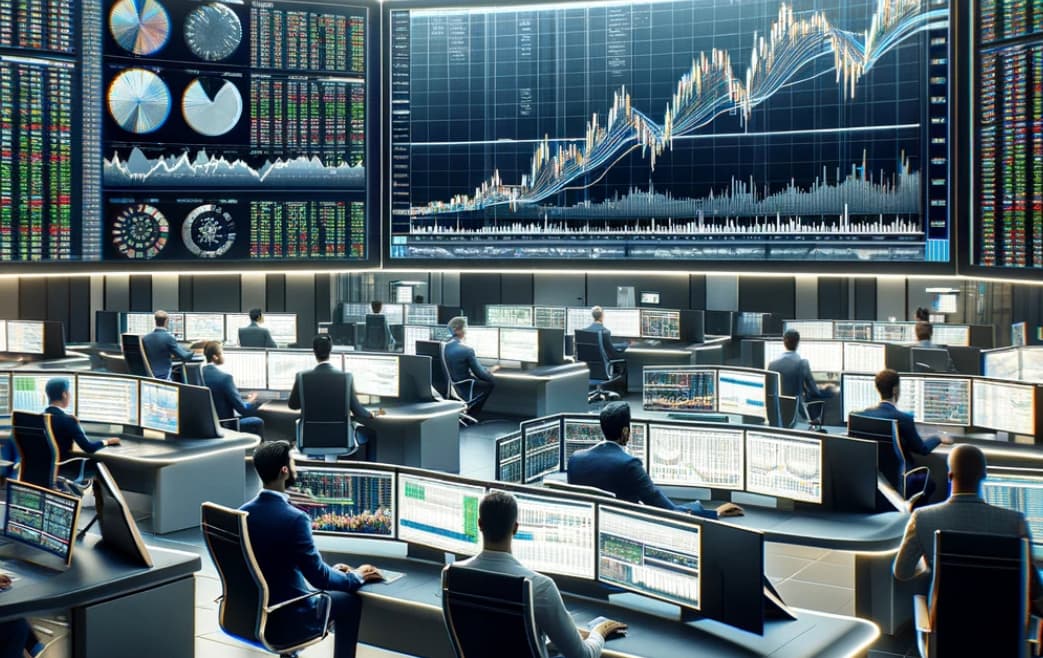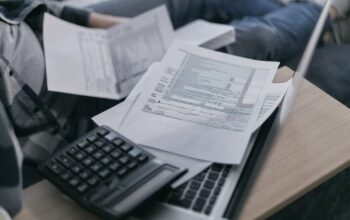In the vast landscape of futures trading, there is a myriad of trading rooms, nearly 2000 to be precise. However, the catch here is that a staggering 99.6% of these trading rooms don’t engage in actual trading activities. Instead, they focus on selling education, strategies, and various trading programs. In essence, they are vendors rather than active traders, resulting in a lack of performance data or a credible track record to showcase. The question that naturally arises is: why are there so few trading rooms that genuinely trade? The answer lies in the inherent difficulty of achieving success in the world of trading. Selling trading-related products and services, on the other hand, is often perceived as a simpler and more straightforward path.
When it comes to robot programs in the realm of futures trading, there are nearly 4000 such programs listed across platforms like Striker Industries, Cannon Isystems, Futures Truth, and Collective2. These robots often present performance data or track records. However, a crucial caveat is that this data is primarily based on back-testing and hypothetical trades. In other words, these robots have never actually executed trades in real-time market conditions.
- Target Trading Pro: A Unique Approach. Amidst this landscape, Target Trading Pro emerges as a unique player with distinct advantages. Starting from February 1, 2021, Target Trading Pro stands out as the ONLY trading room that actively trades both an algorithmic robot program and an order flow-based strategy. What sets it apart is the fact that these trades are conducted every day, live, with real money, and are backed by real brokerage statements. This commitment to real-time trading differentiates Target Trading Pro from the multitude of rooms and trading bots that exist solely in the realm of theory;
- The Algorithmic Robot Program. Unlike other trading rooms that often resort to theoretical scenarios, Target Trading Pro consistently trades its algorithmic robot program in both simulation (sim) and live trading environments. This real-world application of the robot program provides valuable insights into its performance;
- The Order Flow Strategy. Another distinctive feature is the implementation of an order flow strategy. Traders can witness this strategy in action on a trading DOM (Depth of Market) in real-time, with real cash at stake. It’s a genuine demonstration of how order flow impacts trading decisions.
Daily Live Trading
Target Trading Pro ensures that every trading day is an opportunity for traders to witness live trading activities. A diverse range of futures, including oil, E-mini S&P500, gold, NASDAQ, Dow, silver, bonds, and the Euro (6E), are traded based on prevailing market conditions. This commitment to daily live trading sets Target Trading Pro apart from the plethora of trading rooms that merely claim to be live but lack authenticity.
- Transparency and Accountability. Transparency is a core principle at Target Trading Pro. Trades are showcased in real-time with entries, targets, stops, and cumulative profit/loss (P/L) visible after each trade. Nothing is concealed, ensuring that traders have a clear view of every aspect of the trading process. The trades are taken right in front of the audience, fostering a sense of community within the trading room;
- A Trading Community. Target Trading Pro isn’t just about trading; it’s also about fostering a vibrant trading community. Traders come together, share experiences, and learn from one another. It’s not just a room; it’s a supportive network of individuals on a shared trading journey;
- Disclaimers and Responsible Trading. As traders explore the world of futures trading, it’s vital to heed the disclaimers and recognize the associated risks. Futures and options trading offer substantial rewards but also come with significant potential risks. Traders must be fully aware of these risks and should only trade with funds they can afford to lose. The past performance of trading systems and methodologies doesn’t guarantee future results.
The CFTC (Commodity Futures Trading Commission) Rule 4.41 reminds traders that hypothetical or simulated performance results have limitations. They do not represent actual trading and are often prepared with the benefit of hindsight. Therefore, they should be viewed with caution. Ultimately, Target Trading Pro emphasizes that none of its stated performance should be seen as an endorsement or suggestion to trade. The creator of Target Trading Pro is a trader and educator who aims to provide real-time proof of trading efforts. It’s important to note that these trades are not endorsements or recommendations for others to engage in live trading. Trade conditions and expectations can vary widely, and each trader’s journey is unique.
The landscape of futures trading rooms and robot programs is vast and diverse. Amidst the sea of options, Target Trading Pro stands out as a beacon of authenticity, offering traders the opportunity to witness real-time trading with transparency and accountability. As traders navigate this landscape, they should do so with an awareness of the risks and a commitment to responsible trading practices.
Understanding Risk in Futures Trading
The world of futures trading is one of great opportunity, but it also comes with substantial risks that traders must navigate carefully. It’s imperative to consider whether futures trading aligns with one’s financial condition and risk tolerance. Delving into this realm requires a deep understanding of the associated risks and potential consequences.
- Potential for Total Loss. When engaging in futures trading, individuals face the possibility of sustaining significant losses. This risk extends to the initial margin funds used to enter a futures contract, as well as any additional funds deposited with a broker to establish or maintain a trading position. It’s crucial to recognize that trading in futures markets carries the potential for losing a portion or the entirety of one’s invested capital, and in some cases, even more;
- Contingent Orders and Market Conditions. Traders often employ contingent orders, such as “stop loss” or “stop limit” orders, to manage their positions and limit potential losses. However, it’s important to understand that market conditions may at times render these orders impossible to execute as intended. The high degree of leverage available in futures trading can work both for and against traders, leading to substantial losses as well as gains;
- Volatility and Unpredictability. Futures prices are known for their high levels of volatility and unpredictability. Various factors, including political and economic developments, can influence the price movements of futures contracts. These factors often lie beyond the control of traders or their brokers. As a result, there is no assurance that traders will avoid incurring substantial losses;
- Leveraged Investments and Small Price Movements. Futures trading is inherently leveraged, allowing traders to control contracts with relatively low margin deposits. While this offers opportunities for amplified gains, it also exposes traders to the risk of substantial losses. Even a minor price movement in a futures contract can lead to immediate and significant financial setbacks;
- The Role of Trading Systems. In the world of futures trading, trading systems play a pivotal role in guiding trading decisions. These systems rely heavily on computer algorithms to generate trading signals, offering insights into market trends and potential opportunities. However, traders must be aware that the proper functioning of these systems is contingent on various factors.
Dependence on Technology
Trading systems are highly dependent on the functionality of computer systems. Failures can occur due to issues with third-party systems on which trading systems rely or due to failures in a broker’s hardware or software. Such system failures have the potential to disrupt trading activities and may render trading temporarily impossible.
The Quest for Price Trends
Trading systems often hinge on the identification of significant price trends in futures markets. These trends involve sustained movements in prices, whether upwards or downwards. It’s crucial to acknowledge that such trends may not always materialize. Historical data may showcase instances when price trends were absent, highlighting the inherent uncertainty of futures trading.
Hypothetical Performance and Real Risk
Traders are often presented with hypothetical performance results when considering trading systems. These results are typically prepared with the benefit of hindsight, which may not fully reflect real-time trading conditions. Additionally, hypothetical trading lacks the financial risk associated with actual trading, making it challenging to account for the impact of real financial risk.
Acknowledging Responsibility and Risks
Before embarking on futures trading, traders must engage the services of a broker and meet suitability requirements for trading specific instruments. By accepting the provided disclaimer, traders acknowledge the risks involved in futures trading and assume full responsibility for any financial losses incurred while using trading systems.
Holding Integrity and Accountability
The organization offering trading systems, in this case, trb futures llc, emphasizes its commitment to transparency and accountability. However, it’s essential to understand that trading involves risks, and losses are possible. Traders must not view any stated performance as an endorsement or suggestion to trade. The creator of the trading systems aims to provide real-time evidence of trading efforts but does not serve as a broker-dealer or financial advisor.
Conclusion
In the dynamic world of futures trading, understanding and managing risks is paramount. Traders must recognize the potential for substantial losses, the impact of market conditions on orders, and the unpredictability of futures prices. Additionally, trading systems, while valuable tools, are not immune to technical failures and may not always align with market realities.
As traders embark on their futures trading journey, they do so with a sense of responsibility and a commitment to informed decision-making. Acknowledging the risks and embracing transparency are essential steps toward navigating the intricate landscape of futures trading.



